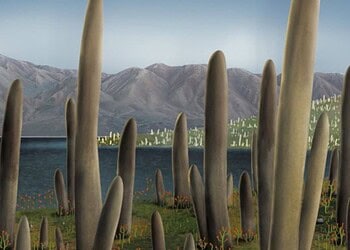
Humans love bananas. We eat around 100 billion bananas per year, or 273 million bananas a day. We also grow 1000 or so varieties of bananas — but there’s a catch; one of these varieties, the Cavendish banana, makes up around 50% of global production. Whenever you go to buy a banana, especially if it’s in a supermarket, it’s most likely a Cavendish banana.
It’s not the first dominant cultivar, either. Before the Cavendish, we had the Gros Michel banana, which dominated global markets. In the early 20th century, however, the Gros Michel banana was brought to its knees by a fungus: Fusarium oxysporum. Specifically, it was attacked by the R1 strain of this fungus. It caused Fusarium wilt, also known as Panama disease, leading to the near-extinction of the Gros Michel variety. The banana industry responded by adopting the Cavendish banana, which was resistant to R1. However, this solution was only temporary.
By the late 20th century, a strain of the same Fusarium species (but far more virulent) emerged. Now, the strain (called TR4) has been detected in banana plantations across Asia, Australia, Africa, and Latin America. Its spread has alarmed scientists and industry stakeholders as it seems to infect Cavendish bananas as well as a number of other cultivars.
Can we stop it this time?
Not our first banana rodeo
“The kind of banana we eat today is not the same as the one your grandparents ate. Those old ones, the Gros Michel bananas, are functionally extinct, victims of the first Fusarium outbreak in the 1950s.” says Li-Jun Ma, professor of biochemistry and molecular biology at UMass Amherst and the paper’s senior author.
Scientists and growers are already having flashbacks of what happened to the Gros Michel. Yet, things are not the same as they were 100 years ago. Researchers are far better equipped to understand and deal with these infections.
“We have spent the last 10 years studying this new outbreak of banana wilt,” says Ma, who is an expert in Fusarium oxysporum, which is not a single species but a “species complex” with hundreds of different varieties that specialize in affecting different plant hosts. These varieties are determined by the acquisition of strain-specific accessory genes in addition to a shared core genome. “We now know that the Cavendish banana-destroying pathogen TR4 did not evolve from the race that decimated the Gros Michel bananas. TR4’s genome contains some accessory genes that are linked to the production of nitric oxide, which seems to be the key factor in TR4’s virulence.”
In the study, researchers identified the genetic and biochemical factors that underpin TR4’s virulence. Unlike its predecessor R1, TR4 lacks the accessory chromosomes that typically carry virulence genes in other Fusarium strains. However, it compensates with a suite of accessory genes embedded within its core chromosomes.
Upon infection, TR4 induces a burst of nitric oxide (NO) production within its mitochondria. This NO burst is believed to overwhelm the banana’s defense mechanisms. In particular, it may interfere with the plant’s ability to manage cellular stress.
Fighting back
The new research doesn’t provide a silver bullet against the banana pathogen, but it does get us closer to a solution. For instance, one promising avenue is the development of NO scavengers. These compounds can neutralize the NO burst induced by TR4, thereby protecting banana plants from infection.
However, in light of these findings, it is clear that a multifaceted approach is needed to combat the spread of TR4. The study’s insights into the molecular mechanisms of TR4 virulence provide a foundation for developing targeted strategies to manage and mitigate its impact.
Before this is tested, however, quarantine and containment remain the frontline defenses against TR4. Given the fungus’s ability to persist in the soil for decades, preventing its spread to new regions is paramount. This requires coordinated efforts at the national and international levels, including strict quarantine measures, monitoring of banana plantations, and rapid response to outbreaks.
We take bananas for granted, but we face a major banana threat. And this is more than just a minor problem — it can threaten food security in some areas. The future of bananas depends on the actions we take today. Whether through innovative research, stringent containment measures, or the development of resistant varieties, the fight against TR4 requires a global effort. The time to act is now.
Journal Reference: Virulence of the banana wilt-causing fungal pathogen Fusarium oxysporum tropical race 4 is mediated by nitric oxide biosynthesis and accessory genes, Nature Microbiology (2024). DOI: 10.1038/s41564-024-01779-7






